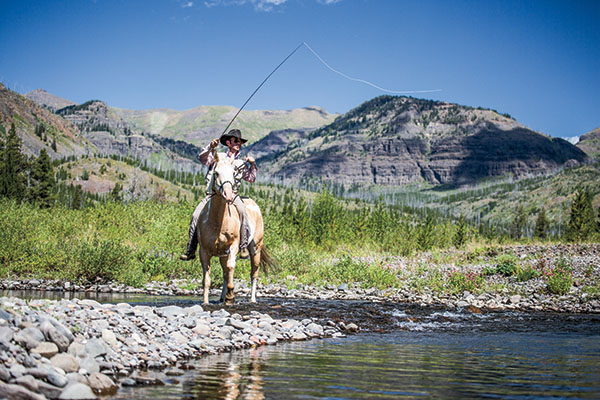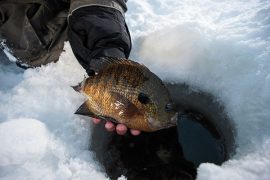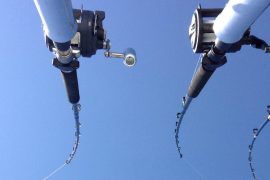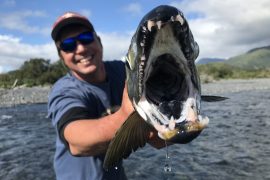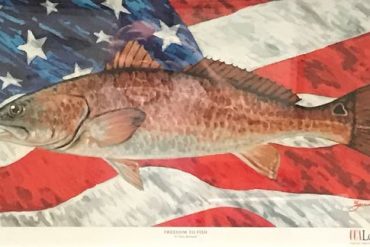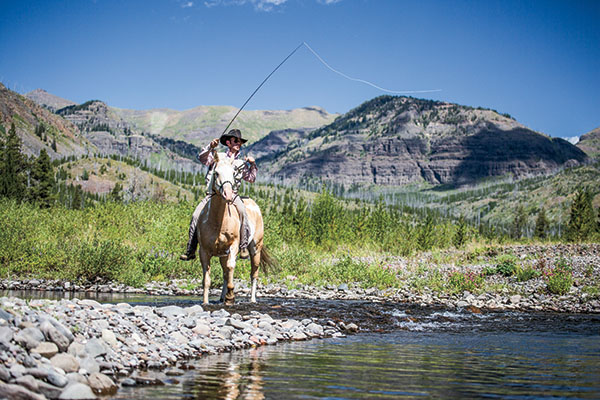
The big-boned bay gelding barely spared a glance as we dug out a 5-weight from the pack mule’s panniers. He was more intent on the tall, lush grass directly in front of his face, and with a look around the meadow as we staked the horses in, I decided I couldn’t blame him. The grassy meadow was only beginning to surrender to midsummer Montana heat, turning crunchy under our footsteps, and the branches of a large tree offered shade from what promised to be another unseasonably warm day. The sound of trickling water drew my attention to the clear current of nearby Hellroaring Creek, and I realized the bay had the right idea. This was a special form of paradise.
Scenes like that, however, must be earned. Several days earlier, we mounted up at Box Canyon, an access point alongside the Boulder River, and rode horseback through a portion of Montana’s wildest country. Crisscrossing the Absaroka-Beartooth Wilderness brought an entirely new meaning to the word “isolated.” These days, even in Montana it can prove challenging to find oneself truly removed from civilization.
The day-long ride canvassed miles of Big Sky Country terrain, climbing sharply uphill to cross over the Great Divide at Hellroaring Divide, and then descending into a meadow right out of a Zane Grey novel. Trees burned nearly 30 years ago in the great Yellowstone fires guided our train of horses into Bull Moose Camp, a congregation of tents situated at the confluence of the three forks of Hellroaring Creek—the same Hellroaring that meanders into Yellowstone National Park a mere eight miles south and eventually joins the Yellowstone River.
Forget the trendy bustle of Bozeman or the industry of Billings—in the backcountry, it’s far more likely you’ll see moose, deer, or even wolves than another person. You are removed from the distractions and worries of everyday life. Days drift by, timed only by fishing expeditions and a hearty three meals a day from the steadfast camp cook, Pat. At the seasoned age of 69, Pat spends the entire season in the camp before heading into Montana’s Bob Marshall Wilderness to cook for hunting camps for the fall season. From first arrival into Bull Moose Camp, it was readily apparent Pat ran a tight ship—and that it was best to stay on her good side.
Sitting around the campfire, I came to the conclusion that the rest of our compatriots could have stepped directly from the screen of a John Wayne movie. The outfitters Cameron Mayo and his wife Lonny (absarokabeartooth.com) formerly managed a successful ranching operation near Big Timber, Montana, and now lead backcountry fishing and big-game hunting trips to their two permitted camps on the outskirts of Yellowstone National Park. Lonny’s family has been running sheep in these mountains for generations, and she had the stories to prove it.
The camp crew were characters all their own: Patrick was a ranch hand who also ran a small-town bar (the Grizzly Bar in Roscoe) with his wife. Jacob was a third-generation Montana 22-year-old who competed in the rodeo when he was not in the mountains or working the family ranch. And young Jeremiah had a quick wit and good tales from the Miles City Bucking Horse Sale.
The logistics behind running a camp like Bull Moose—and running it safely—were staggering, as evidenced by the long mule train Cameron, Patrick, and Jeremiah packed in with supplies for the week. But at the end of the day, we were there on a united mission: to chase one of the most extraordinary trout species in the Rocky Mountain West.
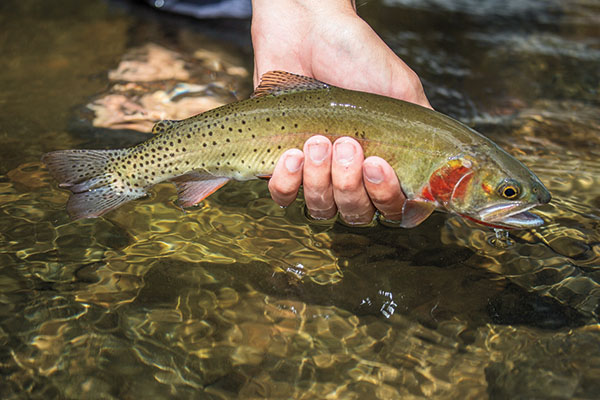
Our quarry was native Yellowstone cutthroat, and the fishing was prime. The fish were under very low pressure; keen to rise to anything that looked halfway interesting.
Hellroaring Creek proved to be primarily a dry-fly fishery, one where a well-placed fly almost always raised a fish. (It had been several years since I went eight fish for eight casts, but one afternoon when I traded the camera for a rod, it happened.)
According to the National Park Service, “Yellowstone cutthroat trout (Oncorhynchus clarkii bouvieri) are the most widespread native trout of the park and were the dominant fish species prior to Euroamerican settlement. They provide an important source of food for an estimated 20 species of birds, and mammals including bears, river otters, and mink.
“Genetically pure Yellowstone cutthroat trout populations have declined throughout their natural range in the Intermountain West, succumbing to competition with and predation by nonnative fish species, a loss of genetic integrity through hybridization, habitat degradation, predation, and angling harvest.
“State…

